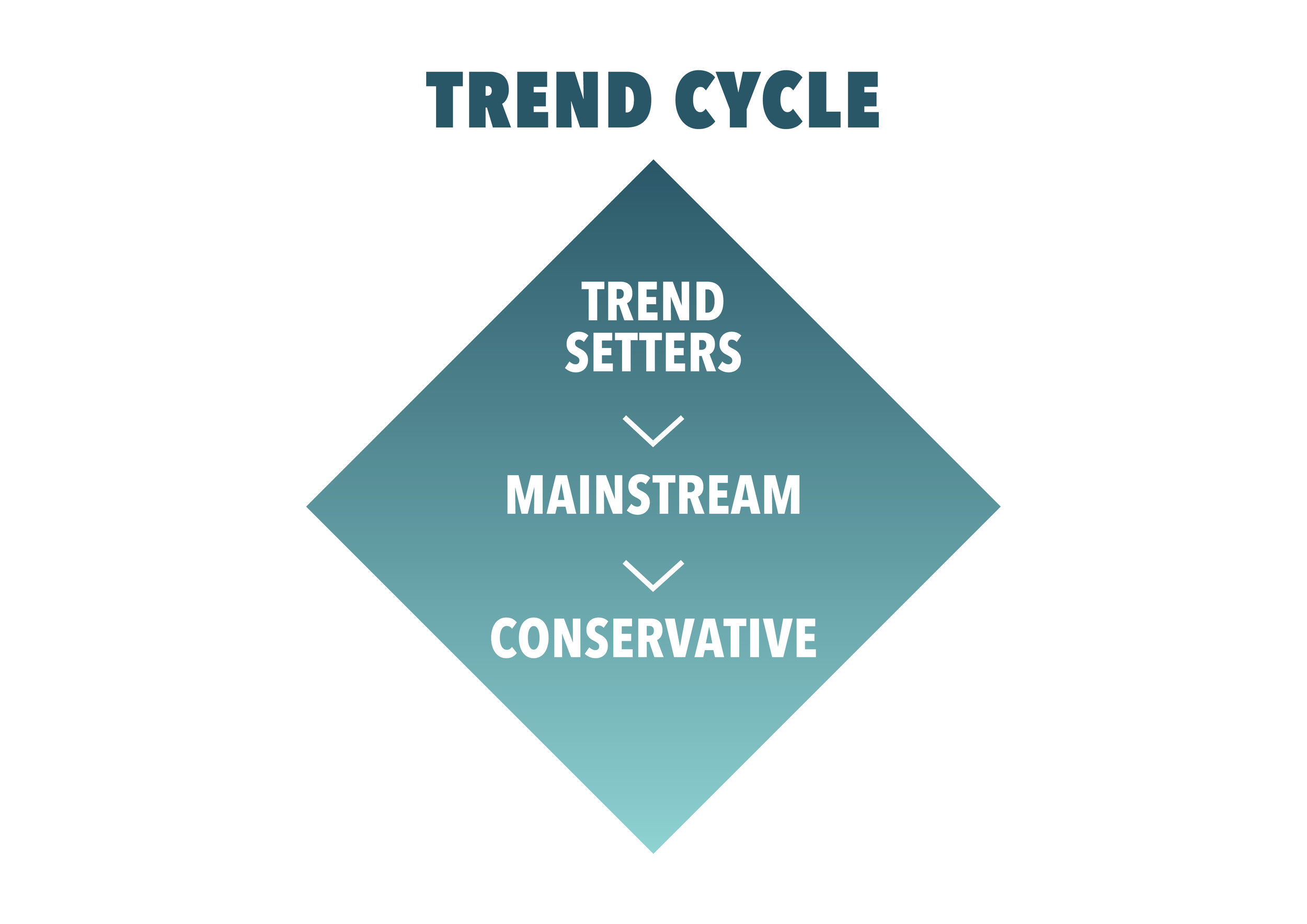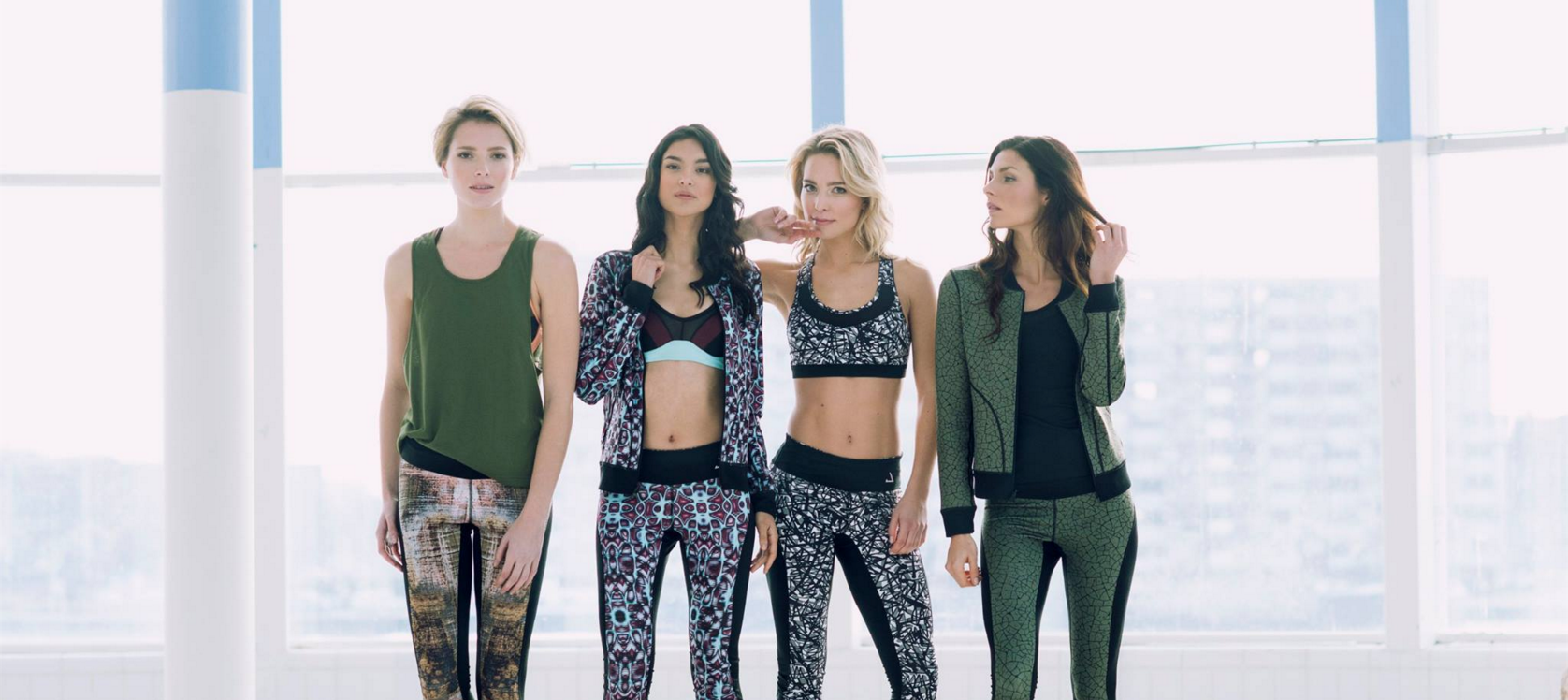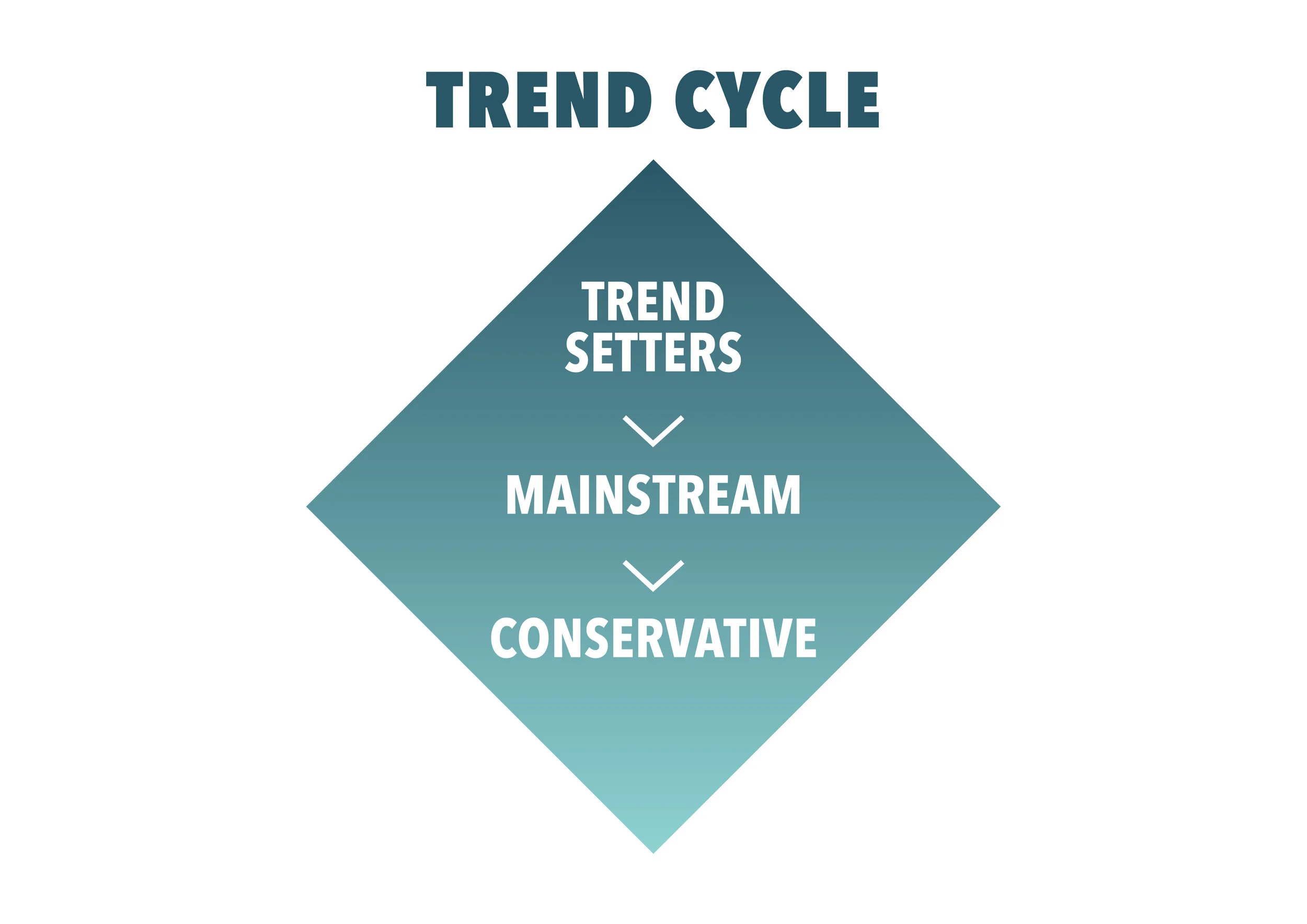Understanding Trends (Part 2)
So where were we?
In my previous article I covered how trends move through different phases of influence, from early adopters to mainstream and, ultimately, conservatives. Building on that understanding, in this piece I wanted to cover two common misconceptions I come across in my work as a trend researcher.
The first of these is about the link between fashion trends and social trends. People often assume that trends are purely linked to fashion — clothing and otherwise. As a predominantly social and branding trend researcher, this can lead to some awkward conversations when I get asked about the hot new item for the coming season. But while I’m not a fashion trend forecaster per se I do have some thoughts on the subject — because trends are all ultimately linked (and sometimes more so than you’d think).
The other common misconception is that a trend is the same thing as a fad, in fashion or otherwise. As I’ll explain shortly, there is a definite difference between the two. And it’s the reason I often encourage people to look at the “why” behind what’s happening, rather than just taking things at face value.
Trends are about more than fashion
I think people best understand trends in the world of fashion, because so much about that world is about newness. But while there is a whole world of fashion trends covering colours, silhouettes, key items and fabrication, trends (in the broader sense of the word) are so much more than what you see on a runway.
There are, however, definite links between fashion trends and social trends . And when you think about it, it’s obvious, of course the way we live is going to impact what we wear. The rise of “athleisure” (the cross over between streetwear and sportswear) and a general concern with healthy living, is an example of this. As we aspire to healthier lives (and indeed a life of wellness starts to signify wealth) then fashion inevitably follows suit.
Athleisure looks (Source: bandt.com.au)
So basically, as a trend researcher, I’m very interested in fashion trends for what they say about broader shifts in social, political and personal trends, but they’re just one expression of the broader field of trends. I’m also very clear to explain that I am most certainly not a fashion trend forecaster. That’s a very specific career and skill set (and I have a deep respect for people who do it).
Ultimately, the reason I make the distinction between style and social trends is that that the fast-paced nature of fashion means that there’s often a tendency towards fads and novelty. Designers are compelled to send a new look down the runway every season (and in increasingly shorter intervals now), which brings me to my next point.
Trends are not fads
This is a very important point to bear in mind when thinking about trends. While a trend says something about what we value and stays around for a fair while, a fad burns bright and then dies out. Their only appeal is their novelty value, and while they may get a fair reach during their lifespan they’re not sustainable. They don’t actually connect with our collective psyche so much as jarring it, and that’s why they tend to disappear as quickly as they arrive.
Gangnam Style (Image: YouTube)
Think of things like Gangnam Style, the mannequin challenge, fidget spinners and almost any meme. These are all everywhere one day and then gone When you live in a hyper-connected world, it’s easy for fads to spread incredibly quickly, however, giving them the appearance of importance. Unlike trends, however, it’s not usually possible to predict a fad. But because they don’t have any significant longevity that doesn’t really matter.
Where to from here?
In the next article I’ll be discussing why we should follow trends at all — and how to do it. If you’d like to know more about the trends that I’m tracking at the moment you can sign up for my newsletter or follow me on Facebook for more. You can also contact me to find out more about what I do in a consulting and public speaking space and hear what I have to say about the subject in person.












